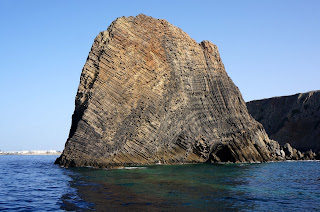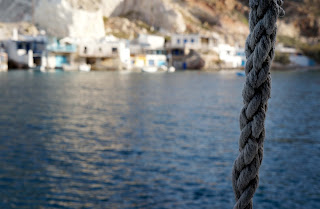Milos or Melos is a volcanic Greek island in the Aegean Sea, just north of the Sea of Crete. Milos is the southwesternmost island in the Cyclades group.
The island is famous for the statue of Aphrodite (the "Venus de Milo", now in the Louvre) and also for statues of the Greek god Asclepius (now in the British Museum), the Poseidon and an archaic Apollo in Athens. Milos is a popular tourist destination during the summer. The Municipality of Milos also includes the uninhabited offshore islands of Antimilos and Akradies. (By Wikipedia)
The volcanic activity in ancient years has endowed Milos island with an exciting variety of gorgeous landscapes, consequently offering the visitor a wide range of activities. The funny shapes of the rocks and their wonderful colours at the beautiful white sandy beaches are one expression of the volcanic features of Milos, the economic activity is another: minerals such as obsidian are excavated here. What is more, one of the most ancient mines in the Mediterranean is on this island.
References had been made by Hippocrates to the peculiar morphology of spectacular caves (Papáfragkas and Sykiá) and a multitude of thermal springs (Kanava, Alyki, Provata, Pikropiyi).The diving enthusiasts will find a paradise in the underwater caves in the triangle formed by Milos, Kimolos and Polyegos islands.
The island’ s villages are lovely too: the stately Plaka (the island’ s capital), the harbour of Adamantas, the beautiful Hivadolimni, the marvellous Emporios with the little lagoon of Revary and the old iron mines.
http://www.visitgreece.gr/en/greek_islands/milos
Here are some pictures from my visit to the island:
The island is famous for the statue of Aphrodite (the "Venus de Milo", now in the Louvre) and also for statues of the Greek god Asclepius (now in the British Museum), the Poseidon and an archaic Apollo in Athens. Milos is a popular tourist destination during the summer. The Municipality of Milos also includes the uninhabited offshore islands of Antimilos and Akradies. (By Wikipedia)
The volcanic activity in ancient years has endowed Milos island with an exciting variety of gorgeous landscapes, consequently offering the visitor a wide range of activities. The funny shapes of the rocks and their wonderful colours at the beautiful white sandy beaches are one expression of the volcanic features of Milos, the economic activity is another: minerals such as obsidian are excavated here. What is more, one of the most ancient mines in the Mediterranean is on this island.
References had been made by Hippocrates to the peculiar morphology of spectacular caves (Papáfragkas and Sykiá) and a multitude of thermal springs (Kanava, Alyki, Provata, Pikropiyi).The diving enthusiasts will find a paradise in the underwater caves in the triangle formed by Milos, Kimolos and Polyegos islands.
The island’ s villages are lovely too: the stately Plaka (the island’ s capital), the harbour of Adamantas, the beautiful Hivadolimni, the marvellous Emporios with the little lagoon of Revary and the old iron mines.
http://www.visitgreece.gr/en/greek_islands/milos
Here are some pictures from my visit to the island:
 |
| Adamantas is its main port and the first view to look upon when approached by ship. |
 |
| Delicious Little Cheese Pies at Marianna Restaurant! (Pitarakia Milou) |
 |
| The best restaurant ENALION a family business in Milos island, offers authentic food made with fresh, pure and local ingredients. |
 |
 |
| Kanelada is a traditional Greek warming drink. |
 |
| Pollonia is the island’s second port after the port of Adamantas. Possibly, it was named after the temple of Apollo that existed on the Lighthouse of Pelekouda (on the left side of the settlement). |




























































































No comments:
Post a Comment